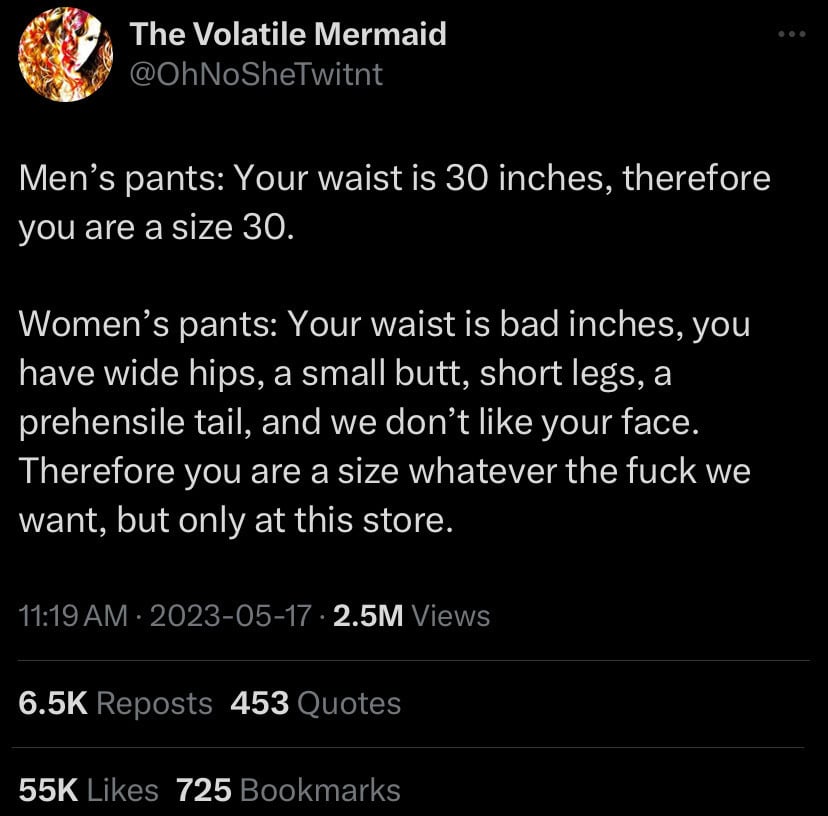this post was submitted on 14 Jul 2024
869 points (97.2% liked)
People Twitter
5425 readers
1894 users here now
People tweeting stuff. We allow tweets from anyone.
RULES:
- Mark NSFW content.
- No doxxing people.
- Must be a pic of the tweet or similar. No direct links to the tweet.
- No bullying or international politcs
- Be excellent to each other.
- Provide an archived link to the tweet (or similar) being shown if it's a major figure or a politician.
founded 2 years ago
MODERATORS
you are viewing a single comment's thread
view the rest of the comments
view the rest of the comments

When was the last time you measured your waist and then tried on a pair of pants?
Men's clothing has tones of vanity sizing these days.
The cuts of fabric are cut with dies. A layer of fabric is place down and a press presses the cutting die down to cut out the shape. A cheap manufacturer over stacks how many sheets are cut at ones. Top layer is going to be bigger then the bottom layer.
I expect there is much more hand cutting going on than you realize. To have multiple styles and different cuts would require giant warehouses of dies. Those aren't cheap and wouldn't last long in a production environment. Any change would require a new die. The machine shop would need to be as big as the cut sew shop.
One skilled (or trained) operator can change from pants to shirts on a whim. You'll notice almost all clothing is made in far off places where labour is cheap. Not to say there isn't die cut stuff, but overwhelmingly the textile industry is hand made.
These things are how multiple layers of fabric gets cut.
Surprisingly CNC cutting machines are becoming more common even in places where labor is "cheap". The technology is becoming affordable and reliable enough to replace even underpaid workers as a "cost saving" measure.
Here's the garment cutting department at a factory in Pakistan.
I once bought a used 80 ton hydraulic press from Levi's. It was used to cut blue jeans, cotton fabric dust everywhere in it. It used maple plywood and die rule cutting dies that could produce 1000's of jeans pieces a day, (polyester/cotton fabrics are a bitch to cut). The dies could be swapped in a few minutes and rebuilt in about an hour with simple tools. The cost of the dies were about $1000 US and could last up to a year.
Those hand operated cutters are fine for simple items made in small lots, but you want to make millions? They are useless.
*I rebuilt it to cut sandpaper discs and sheets using similar die rule dies that could cut 3000 to 4000 pieces per rebuild.
I can see that, way more likely than cutting dies with a press. It would be a huge cost savings as there would be way less material waste and no user fuck-ups.